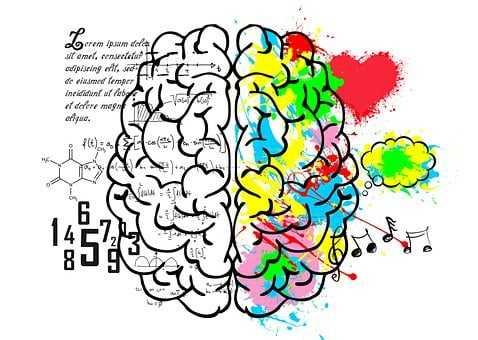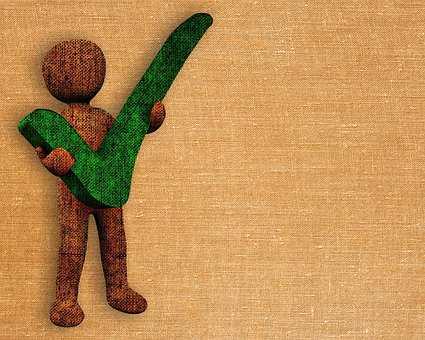Explore the World's Best Ideas
Join today and uncover 100+ curated journeys from 50+ topics. Unlock access to our mobile app with extensive features.
“Nothing in life is as important as you think it is, while you are thinking about it”
DANIEL KAHNEMAN
1.3K
11.7K reads
Understanding 2 Systems
System 1 comprises the oldest parts of the brain. It operates automatically and involuntarily. This system is always functioning and is responsible for most of the day-to-day activities. It is also responsible for our reactions to danger, novelty, and intuition.
System 2 allocates attention and completes tasks that require effort. System 2 is a newly evolved part of the brain, and only humans have a highly developed prefrontal cortex.
1.18K
7.12K reads
Bat and Ball Problem
Try to solve this problem -
"A bat and a ball cost $1.10 in total. The bat costs $1.00 more than the ball. How much does the ball cost?"
-
-
-
If you say $1 for the bat and 10 cent for the ball, then it's wrong because you just used the system - 1.
(Answer is given in the last idea of the article.)
1.13K
7.6K reads
“Our comforting conviction that the world makes sense rests on a secure foundation: our almost unlimited ability to ignore our ignorance.”
DANIEL KAHNEMAN
1.17K
8.73K reads
Anchoring Effect
Anchors are arbitrary values that we consider for an unknown quantity before encountering that quantity.
Anchors are known to influence many things, including the number of money people are willing to pay for products they have not seen.
So before choosing the anchors, just research about the thing then decide.
1.15K
5.65K reads
Availability Bias
The bias of availability happens when we give too much weight to recent evidence or experience.
If we don’t check for the ‘Availability Bias’ (or what psychologists call the mere‐exposure effect) prior to an important decision, then our preference will be based on environmental conditioning.
So before each decision just ask “Is this the best option or just the option I've been frequently exposed to?”
1.25K
4.84K reads
“A reliable way to make people believe in falsehoods is frequent repetition because familiarity is not easily distinguished from truth. Authoritarian institutions and marketers have always known this fact.”
DANIEL KAHNEMAN
1.24K
5.81K reads
Framing Effect
Imagine that there is an outbreak of a deadly disease that will kill 600 people and you must choose between the two options -
- Option 1: Guarantees that 200 people will live.
- Option 2: Provides a one-third probability that all 600 people will live, but it also comes with a 1/3 probability that no one will survive.
You may choose option 1 due to loss aversion. If you think through the choices, you can see that the probabilities of each are identical. This is called the framing effect.
1.19K
4.47K reads
“Intelligence is not only the ability to reason; it is also the ability to find relevant material in memory and to deploy attention when needed.”
DANIEL KAHNEMAN
1.21K
6.2K reads
Status Quo Bias
System 1 defaults to choices that maintain the status quo because System 1 psychologically weighs losses twice as much as gains (loss aversion). System 1 is emotionally attached to objects it owns or invests in (the endowment effect) and overvalues the status quo.
You can ask yourself - “What opportunities do I lose by maintaining the status quo?” (or, “If I continue to say yes to this, what am saying no to?”)
1.2K
3.87K reads
Loss Aversion
Ask yourself “If I flipped a coin and could lose $100 on tails or win $150 on heads, would you take the bet?” Did you feel a slight hesitation to the gamble? Most people do, even though it’s a reasonable bet to take.
Losses loom larger than gains - relative to a reference point, a loss is more painful than a gain of the same magnitude.
1.16K
3.85K reads
Tunnel Vision Bias
System 1 loves to use limited information to form quick judgments and then block out conflicting information. The author Daniel Kahneman calls it W‐Y‐S‐I‐A‐T‐I (What You See Is All There Is).
Kahneman explains that System 1 sees two or three pieces of information and then “infers and invents causes and intentions then neglects ambiguity and suppresses doubt.”
Just try to ask “Why might the opposite be true?”
1.18K
3.74K reads
Confirmation Bias
Within WYSIATI, people will be quick to seize on limited evidence that confirms their existing perspective. And they will ignore or fail to seek evidence that runs contrary to the coherent story they have already created in their mind.
Just ask yourself - "Why do we have certain beliefs or perspectives?"
1.15K
3.45K reads
“The confidence that individuals have in their beliefs depends mostly on the quality of the story they can tell about what they see, even if they see little.”
DANIEL KAHNEMAN
1.15K
4.73K reads
Answer To Bat & Ball Problem
In this type of case you just need to use your system 2 and spend some time with it. And you will get the answer as $1.05 for bat and 5 cent for the ball.
Now the ball is $1 more than the bat.
1.11K
5.23K reads
IDEAS CURATED BY
A learner who loves to share wisdom on personal growth, happiness, and success on Deepstash. Topics include motivation, habits, goals, and mindset. Believes that everyone can achieve their dreams with the right attitude and action.
Curious about different takes? Check out our Thinking, Fast and Slow Summary book page to explore multiple unique summaries written by Deepstash users.
Suman Saha's ideas are part of this journey:
Learn more about books with this collection
How to make rational decisions
The role of biases in decision-making
The impact of social norms on decision-making
Related collections
Different Perspectives Curated by Others from Thinking, Fast and Slow
Curious about different takes? Check out our book page to explore multiple unique summaries written by Deepstash curators:
16 ideas
Talha Mumtaz ✔️'s Key Ideas from Thinking, Fast and Slow
Daniel Kahneman
1 idea
madhumita mahali's Key Ideas from Thinking, Fast and Slow
Daniel Kahneman
4 ideas
Gilgalad Toram's Key Ideas from Thinking, Fast and Slow
Daniel Kahneman
Discover Key Ideas from Books on Similar Topics
Read & Learn
20x Faster
without
deepstash
with
deepstash
with
deepstash
Personalized microlearning
—
100+ Learning Journeys
—
Access to 200,000+ ideas
—
Access to the mobile app
—
Unlimited idea saving
—
—
Unlimited history
—
—
Unlimited listening to ideas
—
—
Downloading & offline access
—
—
Supercharge your mind with one idea per day
Enter your email and spend 1 minute every day to learn something new.
I agree to receive email updates








